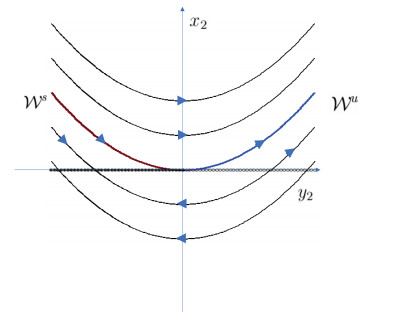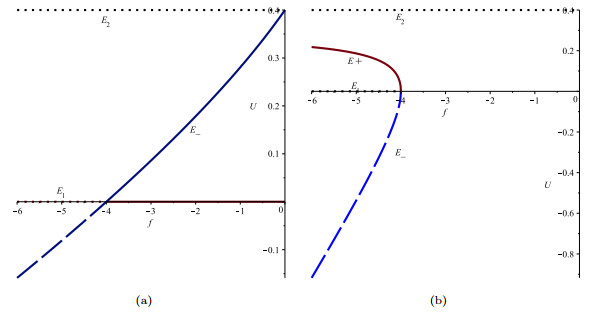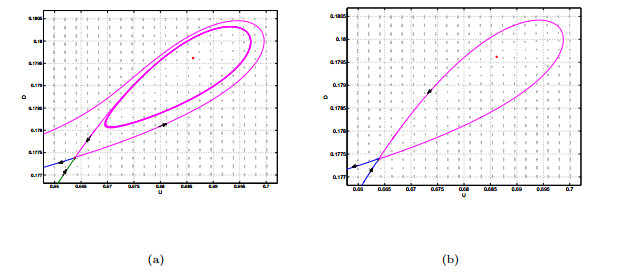Lingling Liu, Ke-wei Ding, Hebai Chen. DYNAMICAL ANALYSIS OF A LOTKA-VOLTERRA LEARNING-PROCESS MODEL[J]. Journal of Applied Analysis & Computation, 2019, 9(5): 1855-1871. doi: 10.11948/20180331
| Citation: |
Lingling Liu, Ke-wei Ding, Hebai Chen. DYNAMICAL ANALYSIS OF A LOTKA-VOLTERRA LEARNING-PROCESS MODEL[J]. Journal of Applied Analysis & Computation, 2019, 9(5): 1855-1871. doi: 10.11948/20180331
|
DYNAMICAL ANALYSIS OF A LOTKA-VOLTERRA LEARNING-PROCESS MODEL
-
1.
School of Sciences, Southwest Petroleum University, Chengdu, Sichuan 610500, China
-
2.
Institute for Artificial Intelligence, Southwest Petroleum University, Chengdu, Sichuan 610500, China
-
3.
School of Computer Science and Technology, Southwest Minzu University, Chengdu, Sichuan 610041, China
-
4.
School of Mathematics and Statistics, Central South University, Changsha, Hunan 410083, China
-
5.
College of Mathematics and Computer Science, Fuzhou University, Fuzhou, Fujian 350116, China
-
Corresponding author:
Email address: chen hebai@sina.com(H. Chen)
- Fund Project:
The authors were supported by National Natural Science Foundation of China (11501475, 11771308, 11801079, 11871041)
-
Abstract
A Lotka-Volterra learning-process model was proposed by Monteiro and Notargiacomo in [Commum. Nonlinear Sci. Numer. Simulat. 47(2017), 416-420] to approach learning process as an interplay between understanding and doubt. They studied the stability of the boundary equilibria and gave some numerical simulations but no further discussion for bifurcations. In this paper, we study the qualitative properties of the interior equilibria and a singular line segment completely. Moreover, we discuss their bifurcations such as transcritical, pitchfork, Hopf bifurcation on isolated equilibria and transcritical bifurcation without parameters on non-isolated equilibria. Finally, we also demonstrate these analytical theory by numerical simulations.
-

-
References
|
[1]
|
C. Bordogna and E. Albano, Phase transitions in a model for social learning via the internet, Int. J. Mod. Phys. C, 2001, 12(8), 1241-1250. doi: 10.1142/S0129183101002498
CrossRef Google Scholar
|
|
[2]
|
J. Carr, Applications of Centre Manifold Theory, New York, Springer, 1981.
Google Scholar
|
|
[3]
|
H. Chen, S. Duan, Y. Tang and J. Xie, Global dynamics of a mechanical system with fry friction, J. Diff. Eqs., 2018, 265, 5490-5519. doi: 10.1016/j.jde.2018.06.013
CrossRef Google Scholar
|
|
[4]
|
C. Chicone, Ordinary Differential Equations with Applications, New York, Springer, 2006.
Google Scholar
|
|
[5]
|
S. Chow and J. Hale, Methods of Bifurcation Theory, New York, Springer, 1982.
Google Scholar
|
|
[6]
|
Y. Kuznetsov, Elements of Applied Bifurcation Theory, New York, Springer, 1995.
Google Scholar
|
|
[7]
|
S. Liebscher, Bifurcation without Parameters, New York, Springer, 2015.
Google Scholar
|
|
[8]
|
L. Liu, O. Aybar, V. Romanovski and W. Zhang, Identifying weak foci and centers in the Maxwell-Bloch system, J. Math. Anal. Appl., 2015, 430, 549-571. doi: 10.1016/j.jmaa.2015.05.007
CrossRef Google Scholar
|
|
[9]
|
F. Marton and R. Säljö, On qualitative differences in learning: I-outcome and process, Br J Educ Psychol, 1976, 46(1), 4-11. doi: 10.1111/j.2044-8279.1976.tb02980.x
CrossRef Google Scholar
|
|
[10]
|
L. Monteiro, Population dynamics in educational institutions considering the student satisfaction, Commun. Nonlinear Sci. Numer. Simulat., 2016, 30, 236-242. doi: 10.1016/j.cnsns.2015.06.015
CrossRef Google Scholar
|
|
[11]
|
L. Monteiro and P. Notargiacomo, Learning process as an interplay between understanding and doubt: A dynamical systems approach, Commun. Nonlinear Sci. Numer. Simulat., 2017, 47, 416-420. doi: 10.1016/j.cnsns.2016.12.005
CrossRef Google Scholar
|
-
-
-






 DownLoad:
DownLoad:

